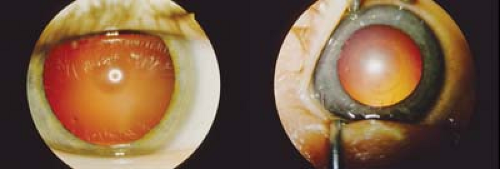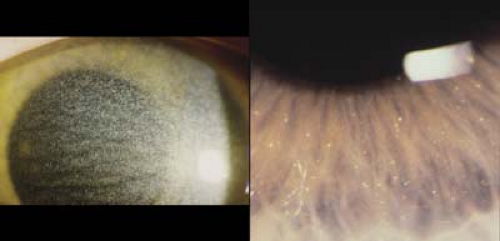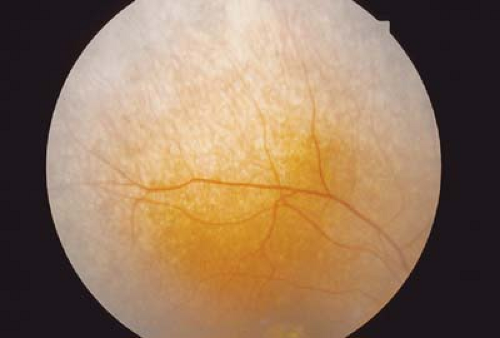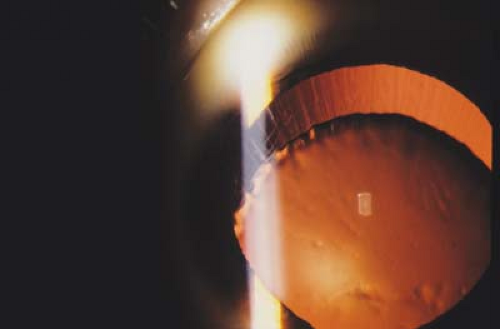Metabolic
Alex V. Levin
Thomas W. Wilson
J. Raymond Buncic
Diseases of metabolism are classified according to the type of substance accumulated or absent due to an error in enzyme production or function, including amino acids (cystinosis, homocystinuria, phenylketonuria, and tyrosinemia), organic acids (glutaric aciduria and alkaptonuria), cholesterol (Smith-Lemli-Opitz), sugars (diabetes mellitus, galactosemia, and carbohydrate-deficient glycoprotein syndrome), lipids (abetalipoproteinemia, hyperlipoproteinemia, and lecithin acyltransferase deficiency), neural components (Fabry, galactosialidosis, mucopolysaccharidosis, mucolipidosis, and sphingolipidosis), peroxisomal (Zellweger, neonatal adrenoleukodystrophy, Refsum, and hyperoxaluria), and metals (Menkes and Wilson disease).
Ocular abnormalities in the sphingolipidosis are caused by accumulation of products of metabolic degradation of cerebral tissue. A cherry red spot is seen in Tay-Sachs, Niemann-Pick, Sandhoff, Farber, metachromatic leukodystrophy, and GM1 gangliosidosis. Optic atrophy is a manifestation of metachromatic leukodystrophy, Krabbe, Zellweger, and all mucopolysaccharidoses. Corneal abnormalities are common in Fabry (corneal verticillata) and corneal cloudiness in Lowe, metachromatic leukodystrophy, Zellweger, mucolipidoses, and mucopolysaccharidoses.
Kayser-Fleischer rings can be located in the peripheral cornea of patients with the copper metabolism abnormality Wilson disease. Cataracts are common in diabetes mellitus, mannosidosis (spoke-wheel cataract), Lowe, Fabry (spoke-wheel cataract), and Niemann-Pick (brown anterior lens changes).
 Figure 20.4 Galactosemia Galactosemia is a group of metabolic disorders with defects in galactose metabolism. Different enzyme deficiencies will lead to specific clinical features. Newborns with galactose-1-phosphate uridylyl transferase deficiency will commonly present as a newborn with jaundice, difficulty feeding, irritability, and hepatomegaly. Permanent damage to the brain and liver are inevitable without an early diagnosis. Classic cataract of galactosemia is an oil droplet located in the nucleus. Other causes of galactosemia include galactokinase deficiency. Diagnosis of galactosemia is demonstrated by increased levels of reducing substance in the urine. Treatment includes avoiding milk products and foods containing galactose.
Stay updated, free articles. Join our Telegram channel
Full access? Get Clinical Tree
 Get Clinical Tree app for offline access
Get Clinical Tree app for offline access

|


